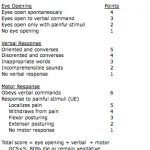Injured patients transported to the ED are just the tip of the iceberg. There are some patients who are evaluated by EMS, either at the scene or in their home, but never transported. These patients do not appear in any trauma registry and little information is known about how they do after their evaluation.
Stanford University reviewed county data and found 5,865 patients out of 69,000 who were evaluated by EMS but not transported (3 counties, 3 years of data). Over a quarter (29%) presented to an ED later and 92 were admitted (2% of the total). By linking available vital statistics data, at least 7 were found to have died.
Bottom line: Patients who are evaluated by EMS but ultimately not transported to a hospital may have unsuspected problems. The mortality is very low (0.14%) but these may represent preventable deaths. It is not practical to force everyone to go to the ED. However, it should be cost-effective to at least make a followup call the next day on these select patients to see if they should be urged to get further evaluation in the ED.
Reference: The forgotten trauma patient: outcomes for injured patients evaluated by EMS but not transported. AAST 2011 Annual Meeting, Oral Paper 46.

